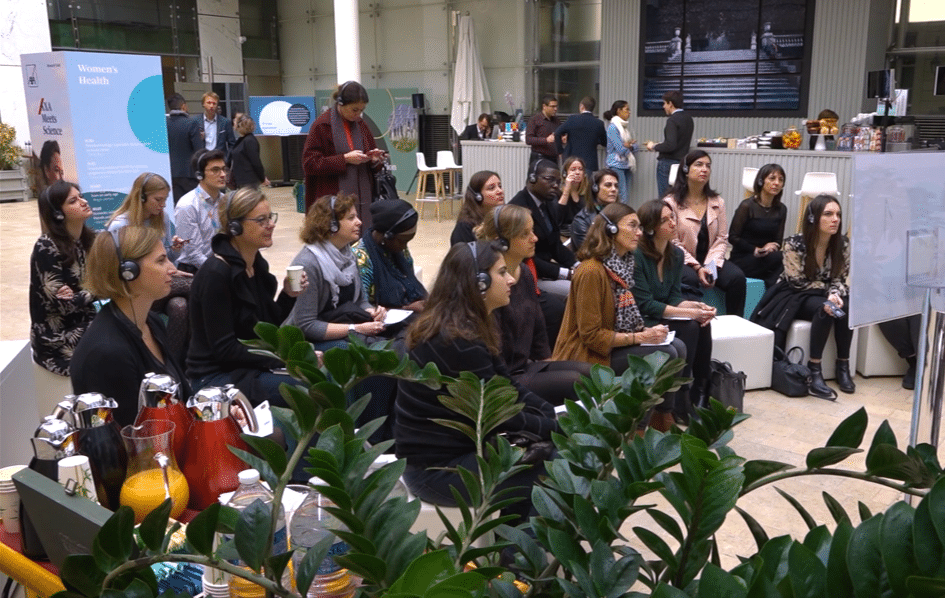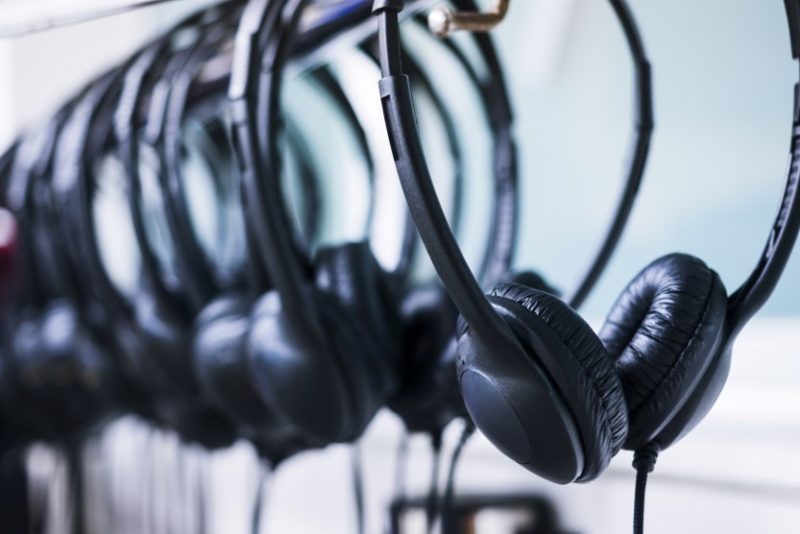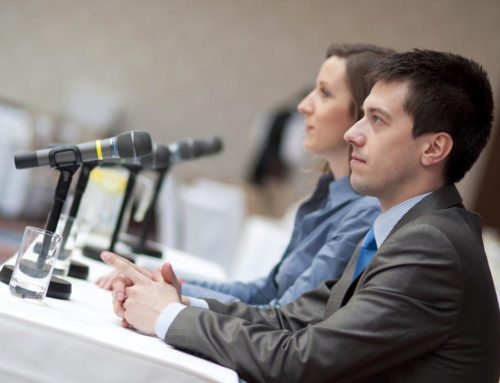Silent conferences:
a new wave in science
Ssshhh… a new trend in science events is on the rise. Ever been to a silent disco, where the guests wear headphones instead of blaring out loud music? Well, a silent conference is very similar. Audiences are invited to listen to research talks whilst wearing wireless headsets. Lately, we have been seeing an increase in the frequency of this type of conference in the SciComm-osphere. The advantage: it means you can turn any space into a conference room. And even the use of a single space to hold several talks in parallel, giving speakers more floor time. Here we give you the lowdown on the vogue of silent conferences…

Silent conferences: the recipe
First off, to opt for silent conference, you need a science event. The silent conference can be the event itself, or it can be a component of a much larger symposium. Either way, the meeting space will be split into sections; each with its own speaker or group of speakers. For example, we recently organized a silent conference event for the AXA Research Fund. The entrance hall to AXA headquarters was divided into three zones, each with their own backdrop and seating area.
Secondly, you will need to divide your speakers into groups; generally organised by research topics or themes. Speakers are given a microphone and spectators are equipped with a headset. A device fitted with a switch can be used to flick between several audio channels – one per presentation-zone on a certain theme. To listen to the speaker who interests you most, all you need to do is switch to the corresponding channel.
At our AXA Research Fund event, 15 post-doctoral researchers were spread across three groups. Over the course of a morning, they presented their projects in line with the UN Sustainable Objectives in their corresponding “zones”. Each of the three zones were clearly designed in such a way as to be graphically identifiable from one another. This allowed us to hold three science talks in parallel, all the while using one open space, which is normally quite noisy.
“Best-Of” video of the AXA MEETS SCIENCE event.
What are the advantages?
The main benefit of this type of event is that they allow you to turn any space into a conference room. Background noise from the location – echoes, people chattering, coffee machines – is blocked out by the headphones. Also sound from the conferences is minimised meaning that people using the space for other purposes (passers-by, meetings etc.) are not disturbed.
On top of that, spectators can also switch between talks easily. In theory, to listen to another speaker all that is needed is to change audio channels. In practise, the zones are generally very close to one another so viewers can simply scooch over. To make this easier, it’s good to hand out a programme to your guests so that they know who will be speaking, when and where. The equipment is light, so easy enough to carry around. To facilitate this ease of movement, it is helpful if you make it clear to your audience who will be presenting, when and in which zones.
Since the list of your speakers will be divided up between the different areas, this means that you can have more talks over the same amount of time. Hence, each speaker gets more time to speak about their topic. With this extra time, they have more opportunity to develop their subject area and bounce off answers to questions from the audience. From our experience, the atmosphere is simply more relaxed, and people interact more easily.

© AXA Research Fund
Things to listen out for
In terms of equipment, the headsets and devices are user-friendly. But behind the scenes you will need technical support. A technician from the rental company for your headsets will come before your event to fully install the apparatus and also stick around to debug any issues. We would not advise you do this on your own – organizing an event is enough to deal with!
Also, whilst hire of the devices is not too expensive, any loss or damage is costly. At our event, we hired hostesses to hand out the headsets, teach people how to use them and also to ensure that the correct number came back to us at the end.
Be careful of groups size too. Audiences that are too small could kill the atmosphere, so we advise that you keep your groups to a minimum of 10-15 attendees. In the same way, to maintain an atmosphere that is convivial, avoid groups that go over 50 people.
To conclude, silent conferences are a very enriching way for scientists to present their work. You can turn any area into a conference hall, and you can divide it up into several. By creating a more relaxed atmosphere, you favour interactions with the public. If you need any help to organise a silent conference for your event, feel free to get in touch at contact@agentmajeur.fr.
> Event
03/02/2020





